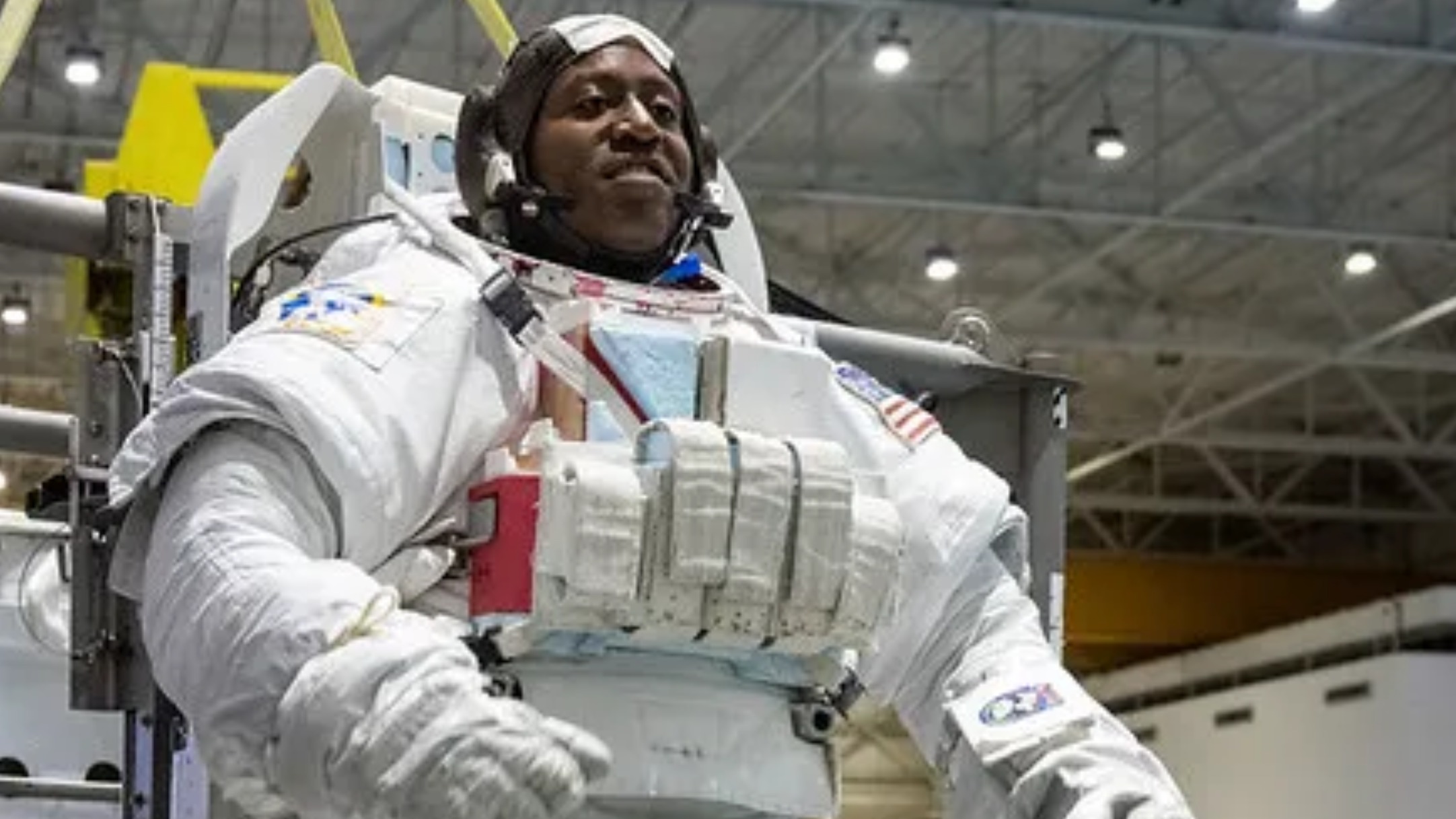Helping build instrument for Japanese Mars mission 'a favorite time' for new NASA astronaut (exclusive)
"Did it come from Mars?"

A new NASA astronaut already has a space mission ready for launch, but (spoiler alert!) he won't be on the rocket.
NASA astronaut Andre Douglas, and a large international team, worked on the Martian Moons Exploration (MMX) mission, which is slated lift off in late 2026. Douglas played a role in creating a key Mars instrument while he was employed at Johns Hopkins University Applied Physics Laboratory (APL) in Baltimore, prior to joining NASA.
"That was a favorite time," Douglas told Space.com on March 5 of his days as an engineer at APL. He no longer has time for that work, as he passed basic training to be an astronaut this month and is now supporting future crewed missions while awaiting his own space seat.
But work on MMX continues, and this week NASA and APL celebrated a big milestone: the U.S. instrument, MEGANE, was shipped to the Japan Aerospace Exploration Agency (JAXA). The instrument will soon be included on the Japanese-led spacecraft and tested ahead of launch.
Related: Japan delays MMX Mars moon sample-return mission to 2026
MEGANE stands for Mars-moon Exploration with Gamma Ray and Neutrons. The instrument aims to support MMX's major goal of figuring out the composition of the two Martian moons, Phobos and Deimos. That's key to figuring out many long-running Red Planet mysteries, such as whether these two tiny moons are captured asteroids or if they formed from some other process.
MEGANE's gamma ray spectrometer aims to map the types and amounts of elements on the surface of these two moons, Douglas explained, particularly for Phobos — the moon MMX will land on to return a sample to Earth.
Breaking space news, the latest updates on rocket launches, skywatching events and more!
"That (instrument) will help us understand the composition of the moon itself and how that moon came to be. Did it come from Mars? Did it come from somewhere else, and get captured in the orbit?"
Douglas paid tribute to his work with JAXA on that mission, saying that it helped him prepare for his time as an astronaut. JAXA is a major partner both on the International Space Station and on NASA's Artemis program, which aims to land astronauts on the moon in the 2020s, for example.
"That was a really cool project," Douglas said of MEGANE. "And I'll get to work with [JAXA] on other projects, here at NASA, as part of the routine."
MMX is not the only project Douglas worked on at APL. He was part of a team that created a proposal to study the sun's behavior, called SIHLA, or Spatial/Spectral Imaging of Heliospheric Lyman Alpha. SIHLA was not selected for spaceflight on NASA's Interstellar Mapping and Acceleration Probe (IMAP), but it did make the semi-finals. The proposal may also be helpful for future missions.
Additionally, Douglas wrote some of the software for NASA's Double Asteroid Redirection Test (DART) mission that slammed into an asteroid moonlet in 2022 as planned. Douglas lauded DART's contributions to planetary defense, as it showed that a small celestrial body's orbit can be altered by collision: "Very awesome. First time we ever did it."

Elizabeth Howell (she/her), Ph.D., was a staff writer in the spaceflight channel between 2022 and 2024 specializing in Canadian space news. She was contributing writer for Space.com for 10 years from 2012 to 2024. Elizabeth's reporting includes multiple exclusives with the White House, leading world coverage about a lost-and-found space tomato on the International Space Station, witnessing five human spaceflight launches on two continents, flying parabolic, working inside a spacesuit, and participating in a simulated Mars mission. Her latest book, "Why Am I Taller?" (ECW Press, 2022) is co-written with astronaut Dave Williams.

